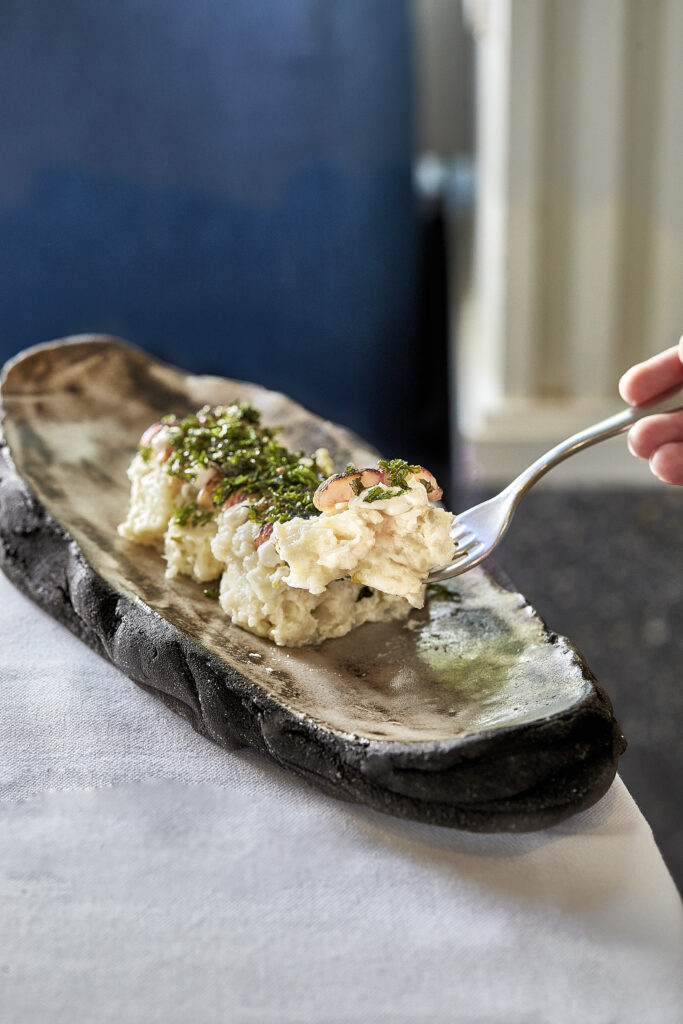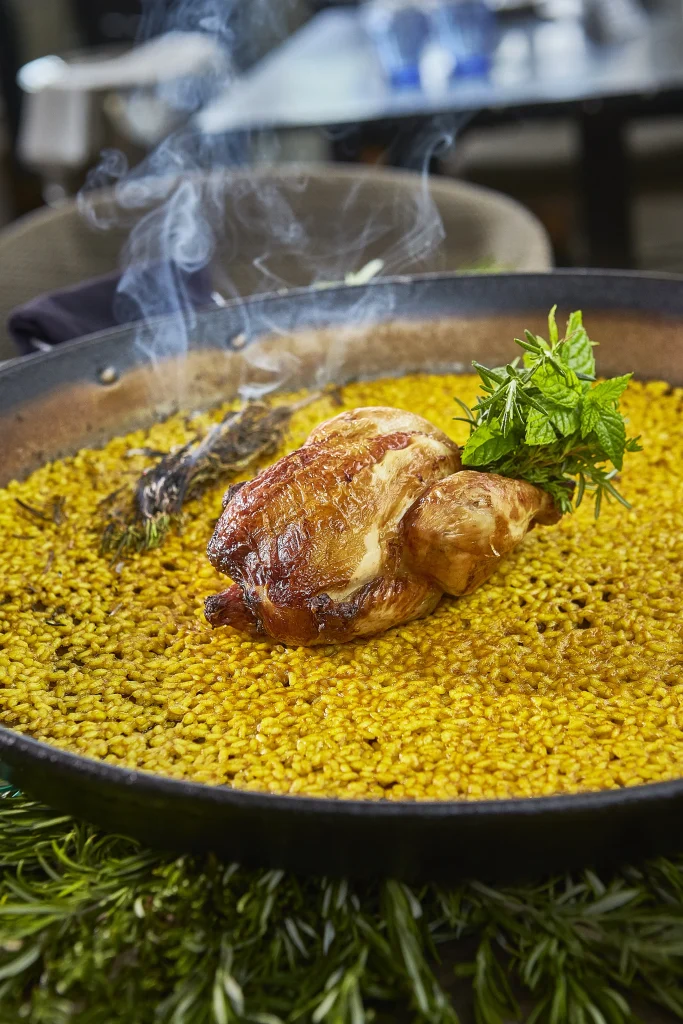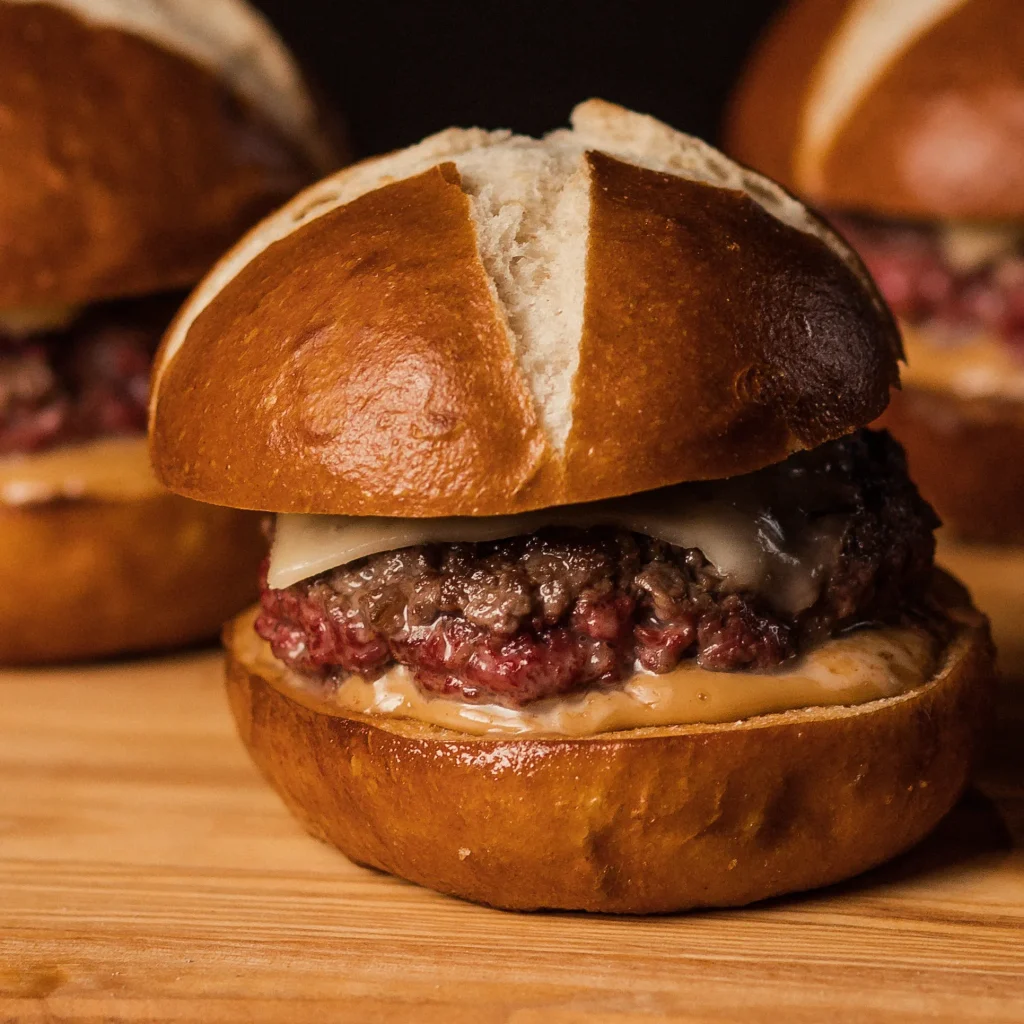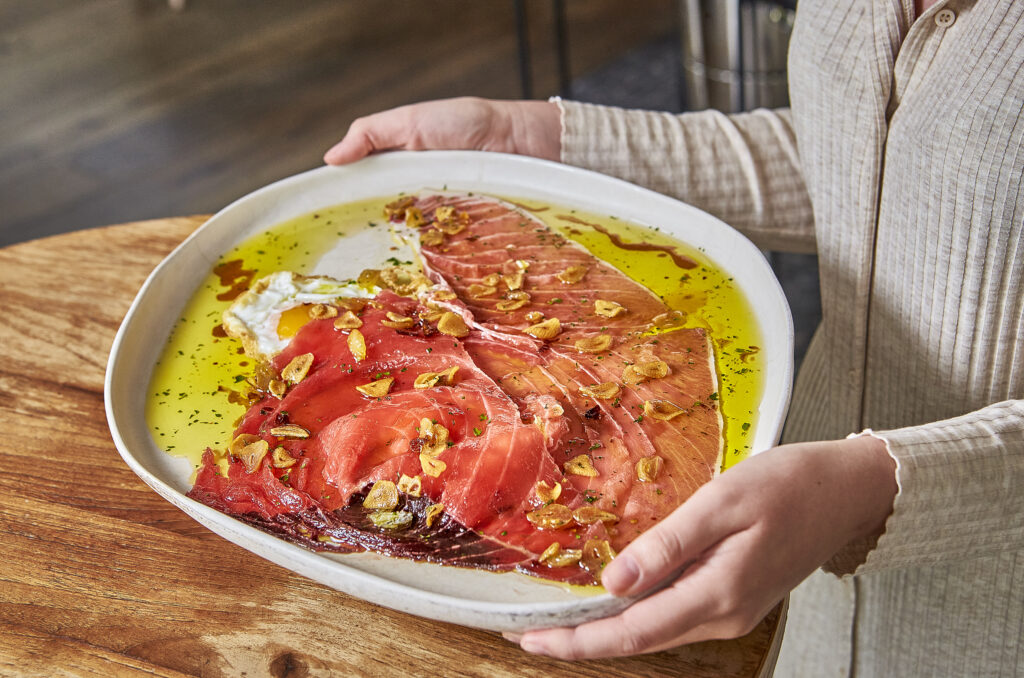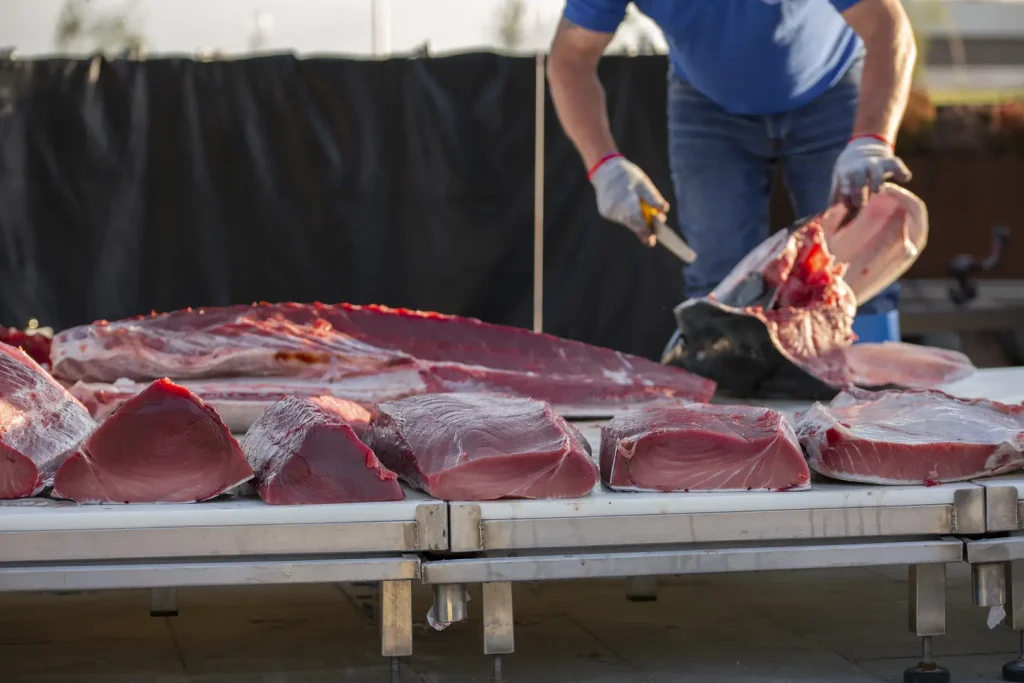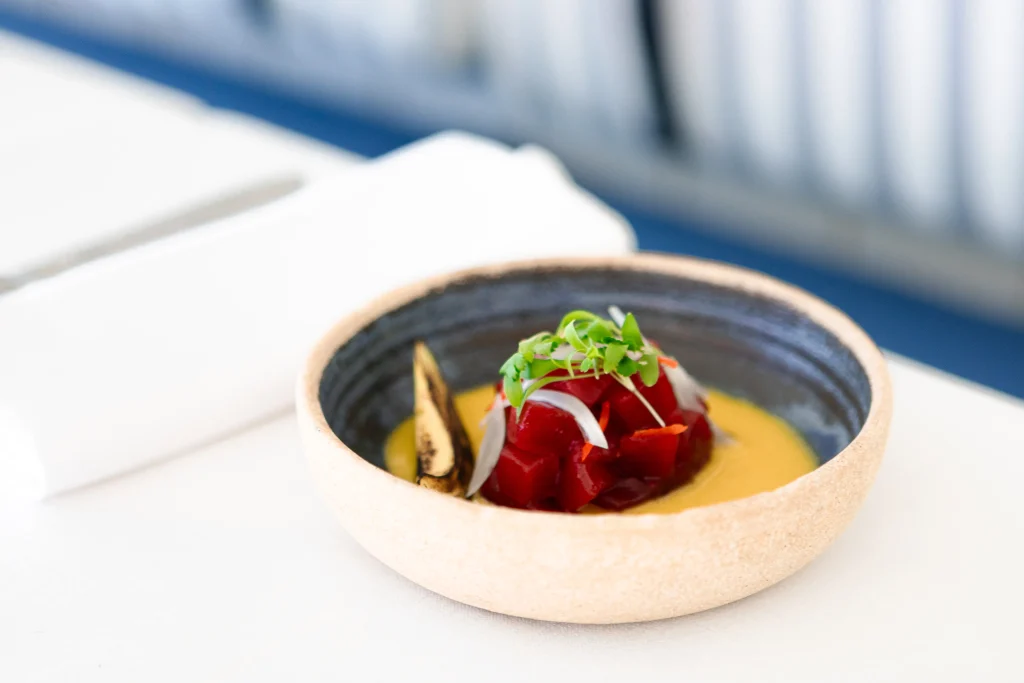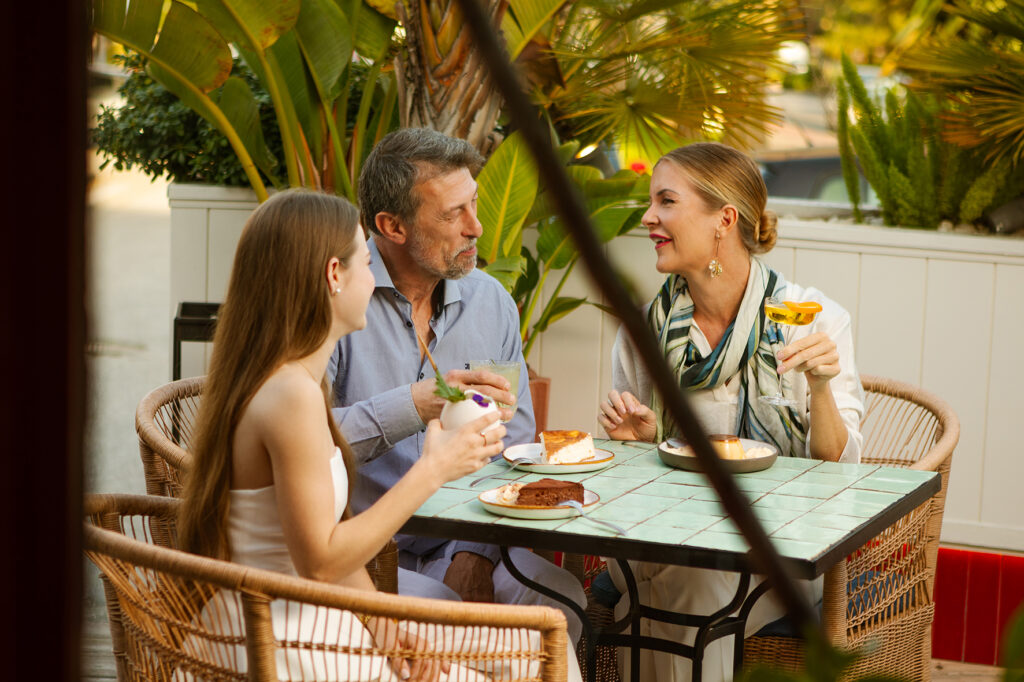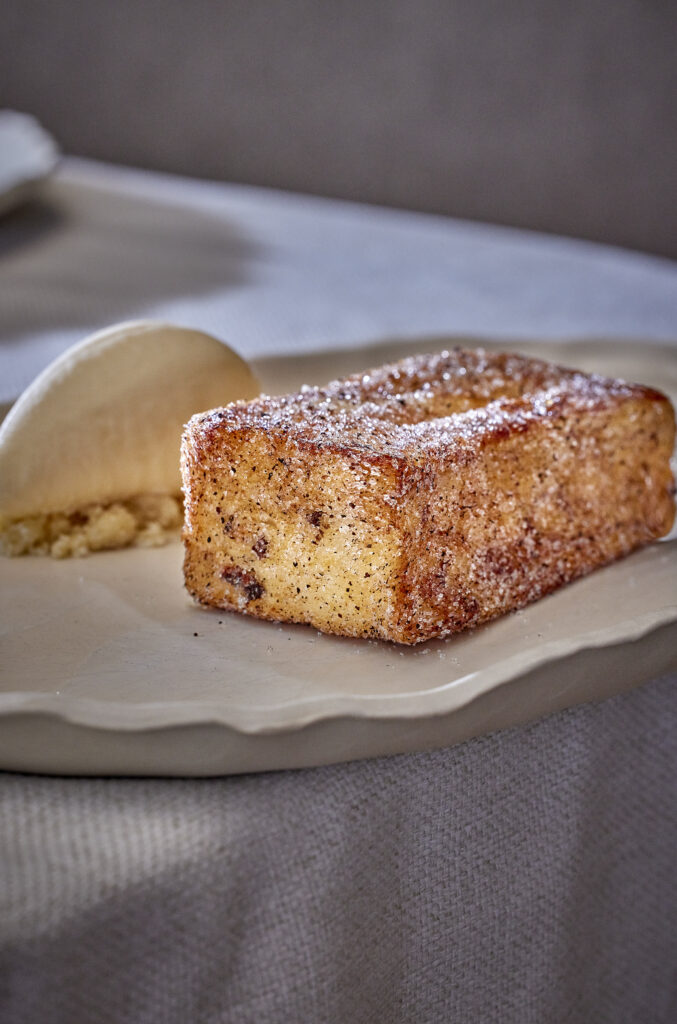When the heat hits, there’s nothing like a good summer recipes by Grupo Dani García. And if there’s one thing Leña, Lobito de Mar, Tragabuches and BiBo have in common, it’s that they know how to embrace the summer season. Light, fresh and flavour-packed dishes.
Fresh is the new green
At BiBo Madrid, there’s a salad made with watermelon, tuna and crispy kale that’s refreshing, crunchy, dressed with a ponzu touch. Perfect to kick things off. If you’re in BiBo Tarifa, go for the bipolar tuna tartare with white soy. And while you’re at it, don’t miss the ceviche—zesty, delicate, and more refreshing than a fan pointed straight at your face.
At Leña, even in summer, you eat with gusto. The grilled Málaga avocado comes with young coriander pesto and a vegetable salpicón with feta cheese. There’s also a lovely tomato salad with green olive juice and mint. And for dessert? The “Espejismo” of stewed peach with basil, yogurt ice cream and orange zest.
At Lobito de Mar, if you’re not ordering rice, you’re missing out. The Coquelet chicken rice is a classic, and the lobster one is simply unmissable. No need to complicate things. A good stock, perfect doneness and real seafood. That’s how summer should be enjoyed.
Cold soups with personality
At Tragabuches, gazpacho isn’t red. It’s pink. The cherry version steals the show—cool, tangy, sweet, and finished with a drizzle of good olive oil. You can also go for the ever-reliable salmorejo. In summer, your body craves things like this. Cold soups, light and flavourful—textbook summer recipes packed with fruit, vegetables and freshness.
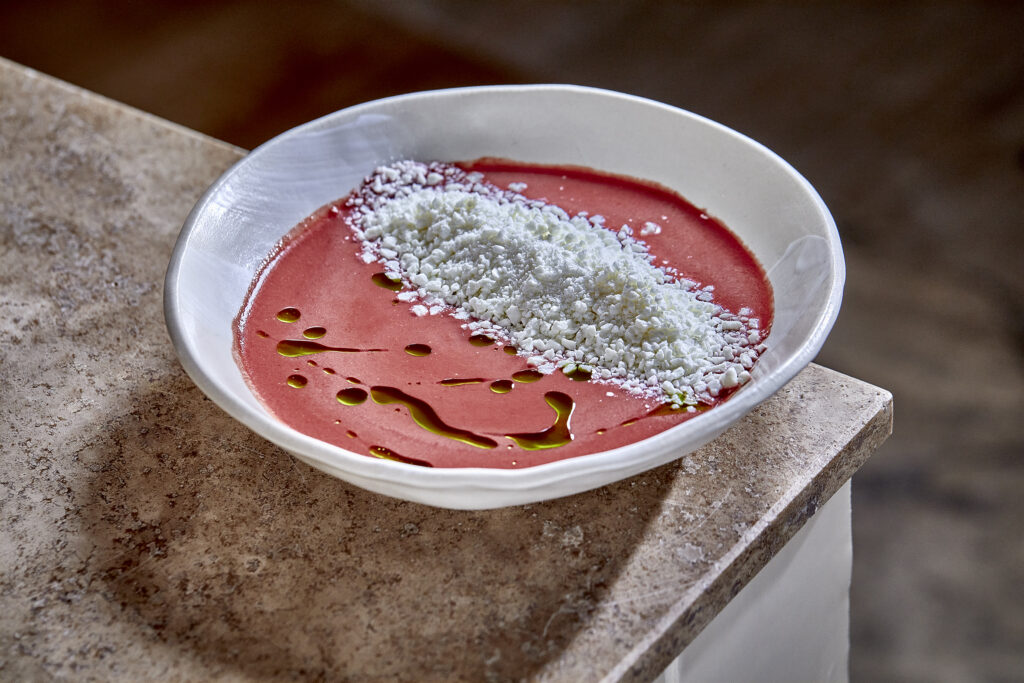
A sweet but light ending
After so many delicious dishes, it’s time for something chilled. At Tragabuches, there are always desserts to slow things down without knocking you out. The cheesecake is a timeless favourite.
At BiBo, there’s the Marbella sun—a dessert full of orange blossom, Marcona almond purée and orange cream that takes you straight to an Andalusian garden. Or head to Lobito de Mar and try the iconic Happy Hippo—fresh, sweet and creamy. Just the right note to end on a smile. And at Leña, the Tarta di Rose with ice cream is the perfect match for the heat of the grill.
Because yes, even desserts have their summer version. Lighter, fresher and, above all, easier to enjoy.
